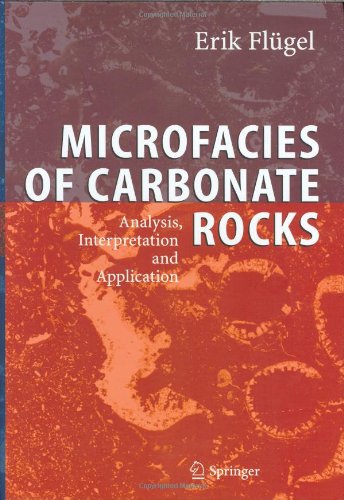

Most ebook files are in PDF format, so you can easily read them using various software such as Foxit Reader or directly on the Google Chrome browser.
Some ebook files are released by publishers in other formats such as .awz, .mobi, .epub, .fb2, etc. You may need to install specific software to read these formats on mobile/PC, such as Calibre.
Please read the tutorial at this link: https://ebookbell.com/faq
We offer FREE conversion to the popular formats you request; however, this may take some time. Therefore, right after payment, please email us, and we will try to provide the service as quickly as possible.
For some exceptional file formats or broken links (if any), please refrain from opening any disputes. Instead, email us first, and we will try to assist within a maximum of 6 hours.
EbookBell Team

5.0
98 reviewsThe book provides a synthesis of the methods used in microfacies analysis, the potential of microfacies in evaluating depositional environments and diagenetic history, and the application of microfacies data in the study of carbonate hydrocarbon reservoirs and the provenance of archaeological materials. The first part of the book (Microfacies Analysis) deals with field and laboratory methods; the description and significance of microfacies data; quantitative microfacies analysis; diagenetic processes and diagenetic products; common textural limestone classifications and specific classifications for reef limestones, non-marine carbonates, recrystallized limestones and mixed carbonate-siliciclastic rocks; biological controls of carbonate sedimentation; and fossils in thin section. The second part (Microfacies Interpretation) is focused on the methods of making of microfacies types; diagonsotic criteria of palaeoenvironmental conditons and processes; the importance of integrated facies analysis including mineralogical and geochemical data; the definition of depositional facies models, facies zones and standard microfacies types, and the recognition of depositional constraints influencing cyclic carbonates, reef limestones, cold-water carbonates, vent and seep carbonates and mixed carbonate-siliciclastic rocks. The last chapter deals with secular variations of facies features. The third part of the book (Practical Use of Microfacies) underlines the facies controls of reservoir and host rocks, the importance of microfacies and diagenesis for understanding technological properties of carbonate rocks and the destruction and conservation of carbonate objects, and discusses the potential of microfacies for archaeometrical studies. Nearly 230 instructive plates (30 in color)showing thin-section photographs with detailed explanations form a central part of the content.